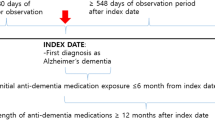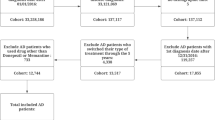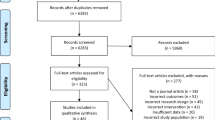Abstract
Combinations of drugs approved to treat Alzheimer's disease (AD) were tested in older rabbits with delay eyeblink classical conditioning, a form of associative learning severely impaired in AD. In Experiment 1 (n=49 rabbits), low doses (0.1, 0.5, 1.0, and 0.0 (vehicle) mg/kg) of memantine (Namenda™) were tested. These three doses neither improved nor impaired acquisition at a statistically significant level. The 0.5 mg/kg dose had the greatest effect numerically and did not cause sensitization or habituation in explicitly unpaired controls. In Experiment 2 (n=56), doses of galantamine (Razadyne™; 3.0 mg/kg) and donepezil (Aricept™; 0.75 mg/kg) that had comparable magnitudes of cholinesterase inhibition were tested alone and in combination with 0.5 mg/kg memantine. Older rabbits treated with galantamine and with galantamine+memantine learned significantly better than vehicle-treated rabbits, but adding memantine did not improve learning over galantamine alone. Older rabbits treated with donepezil or a combination of memantine and donepezil did not learn significantly better than rabbits treated with vehicle. Galantamine has two mechanisms of action: mild cholinesterase inhibition and allosteric modulation of nicotinic acetylcholine receptors (nAChRs). When equated for cholinesterase inhibition, galantamine had significant efficacy in the eyeblink conditioning model system, but donepezil did not, indicating that modulation of nAChRs may be the mechanism that significantly ameliorates learning deficits in this model. In the absence of AD neuropathology in older rabbits, memantine had no efficacy alone or in combination with the other drugs.
Similar content being viewed by others
Log in or create a free account to read this content
Gain free access to this article, as well as selected content from this journal and more on nature.com
or
References
Akk G, Steinbach JH (2005). Galantamine activates muscle-type nicotinic acetylcholine receptors without binding to the acetylcholine-binding site. J Neurosci 25: 1991–2001.
Aracava Y, Pereira EFR, Maelicke A, Albuquerque EX (2005). Memantine blocks α7* nicotinic acetylcholine receptors more potently than N-Methyl-D-aspartate receptors in rat hippocampal neurons. J Pharmacol Exp Ther 312: 1195–1205.
Bradford MM (1976). A rapid and sensitive method for the quantitation of microgram quantities of protein utilizing the principle of protein-dye binding. Anal Biochem 72: 248–254.
Bresink I, Danysz W, Parsons CG, Mutschler E (1995). Different binding affinities of NMDA receptor channel blockers in various brain regions—indication of NMDA receptor heterogeneity. Neuropsychopharmcology 34: 533–540.
Chen G, Steinmetz JE (1998). A general-purpose computer system for behavioral conditioning and neural recording experiments. Behav Res Meth Instr Comput 30: 384–391.
Chen G, Steinmetz JE (2000). Intra-cerebellar infusion of NMDA receptor antagonist AP5 disrupts classical eyeblink conditioning in rabbits. Brain Res 887: 144–156.
Churchill JD, Green JT, Voss SE, Manley E, Steinmetz JE, Garraghty PE (2001). Discrimination reversal conditioning of an eyeblink response is impaired by NMDA receptor blockade. Integr Physiol Behav Sci 36: 62–74.
Cummings JL, Schneider E, Teriot PN, Graham SM, Memantine MEM-MD-02 Study Group (2006). Behavioral effects of memantine in Alzheimer disease patients receiving donepezil treatment. Neurology 67: 57–63.
Dajas-Bailador FA, Heimala K, Wonnacott S (2003). The allosteric potentiation of nicotinic acetylcholine receptors by galantamine is transduced into cellular responses in neurons: Ca2+ signals and neurotransmitter release. Mol Pharmacol 64: 1217–1226.
Dantoine T, Auriacombe S, Sarazin M, Becker H, Pere JJ, Bourdeix I (2006). Rivastigmine monotherapy and combination therapy with memantine in patients with moderately severe Alzheimer's disease who failed to benefit from previous cholinesterase inhibitor treatment. Int J Clin Pract 60: 110–118.
Enz A, Gentsch C (2004). Co-administration of memantine has no effect on the in vitro or ex vivo determined acetylcholinesterase inhibition of rivastigmine in the rat brain. Neuropharmacology 47: 408–413.
Geerts H, Grossberg GT (2006). Pharmacology of acetylcholineserase inhibitors and N-methyl-D-aspartate receptors for combination therapy in the treatment of Alzheimer's disease. J Clin Pharmacol 46: 8S–16S.
Geerts H, Guillaumat P-O, Grantham C, Bode W, Anciaux K, Sachak S (2005). Brain levels and acetylcholinesterase inhibition with galantamine and donepezil in rats, mice, and rabbits. Brain Res 1033: 186–193.
Ghribi O, Larsen B, Schrag M, Herman MM (2006). High cholesterol content in neurons increases BACE, β-amyloid, phosphorylated tau levels in rabbit hippocampus. Exp Neurol 200: 460–467.
Grossberg GT, Edwards KR, Zhao O (2006). Rationale for combination therapy with galantamine and memantine in Alzheimer's disease. J Clin Pharmacol 46: 17S–26S.
Harvey JA, Gormezano I, Cool-Hauser VA (1983). Effects of scopolamine and methylscopolamine on classical conditioning of the rabbit nictitating membrane response. J Pharmacol Exp Ther 225: 42–49.
Jackson ME, Homayoun H, Moghaddam B (2004). NMDA receptor hypofunction produces concomitant firing rate potentiation and burst activity reduction in the prefrontal cortex. Proc Natl Acad Sci USA 101: 8467–8472.
Jain KK (2000). Evaluation of memantine for neuroprotection. Expert Opin Invesg Drugs 9: 1397–1406.
Kishimoto Y, Kawahara S, Kirino Y, Kadotani H, Nakamura Y, Ikeda M, Yoshioka T (1997). Conditioned eyeblink response is impaired in mutant mice lacking NMDA receptor subunit NR2A. Neuroreport 8: 3717–3721.
Lipton SA, Chen HS (2004). Paradigm shift in neuroprotective drug development: clinically tolerated NMDA receptor inhibition by memantine. Cell Death Differ 11: 18–20.
Luine VN, McEwen BS (1983). Sex differences in cholinergic enzymes of diagonal band nuclei in the rat preoptic area. Neuroendocrinology 36: 475–482.
Maskell PD, Speder P, Newberry NR, Bermudez I (2003). Inhibition of human alpha 7 nicotinic acetylcholine receptors by open channel blockers of N-methyl-D-aspartate receptors. Br J Pharmacol 140: 1313–1319.
McLaughlin J, Powell DA, White JD (2002). Characterization of the neuronal changes in the medial prefrontal cortex during jaw movement and eyeblink Pavlovian conditioning in the rabbit. Behav Brain Res 132: 117–133.
Mondadori C, Weiskrantz L, Buerki H, Petschke F, Fagg GE (1989). NMDA receptor antagonists can enhance or impair learning performance in animals. Exp Brain Res 75: 449–456.
Pak JT, Green JT, Heifets B, Pak MH, Woodruff-Pak DS (2002). Nefiracetam ameliorates associative learning impairment in the scopolamine-injected rabbit. Med Sci Monitor 8: 105–112.
Papka M, Ivry RB, Woodruff-Pak DS (1997). Eyeblink classical conditioning and awareness revisited: results of a dual-task study. Psycholog Sci 8: 404–408.
Parsons CG, Danysz W, Quack G (1999). Memantine is a clinically well tolerated N-methyl-D-aspartate (NMDA) receptor antagonist—a review of preclinical data. Neuropharmacology 38: 735–767.
Pereira EF, Alkondon M, Reinhardt S, Maelicke A, Peng X, Lindstrom J et al (1994). Physostigmine and galantamine: probes for a novel binding site on the alpha 4 beta 2 subtype of neuronal nicotinic acetylcholine receptors stably expressed in fibroblast cells. J Pharmacol Exp Ther 270: 768–778.
Porter RHP, Greenamyre JT (1995). Regional variations in the pharmacology of NMDA receptor channel blockers: implications for therpeutic potential. J Neurochem 64: 614–623.
Power JM, Wu WW, Sametsky E, Oh MM, Diserhoft JF (2002). Age-related enhancement of the slow outward calcium-activated potassium current in hippocampal CA1 pyramidal neurons in vitro. J Neurosci 22: 7234–7243.
Robinson GB (1993). MK801 retards acquisition of a classically conditioned response without affecting conditioning-related alterations in perforant path-granule cell synaptic transmission. Psychobiology 21: 253–264.
Schmitt B, Bernhardt T, Moeller HJ, Heuser I, Frolich L (2004). Combination therapy in Alzheimer's disease: a review of current evidence. CNS Drugs 18: 827–844.
Schugens MM, Egerter R, Daum I, Schepelmann K, Klockgether T, Loschmann PA (1997). The NMDA antagonist memantine impairs classical eyeblink conditioning in humans. Neurosci Lett 224: 57–60.
Servatius RJ, Shors TJ (1996). Early acquisition but not retention of the classically conditioned eyeblink response is N-methyl-D-asparatate (NMDA) receptor dependent. Behav Neurosci 110: 1040–1048.
Simon BB, Knuckley B, Powell DA (2004). Galantamine facilitates acquisition of a trace-conditioned eyeblink response in healthy, young rabbits. Learn Mem 11: 116–122.
Solomon PR, Levine E, Bein T, Pendlebury WW (1991). Disruption of classical conditioning in patients with Alzheimer's disease. Neurobiol Aging 12: 283–287.
Solomon PR, Solomon SD, Vander Schaaf E, Perry HE (1983). Altered activity in the hippocampus is more detrimental to classical conditioning than removing the structure. Science 220: 329–331.
Sparks DL, Scheff SW, Hunsaker III JC, Liu H, Landers T, Gross DR (1994). Induction of Alzheimer-like β-amyloid immunoreactivity in the brains of rabbits with dietary cholesterol. Exp Neurol 126: 88–94.
Sparks DL, Schreurs B (2003). Trace amounts of copper in water induce beta-amyloid plaques and learning deficits in a rabbit model of Alzheimer's disease. Proc Natl Acad Sci USA 100: 11065–11069.
Takatsuki K, Kawahara S, Takehara K, Kishimoto Y, Kirino Y (2001). Effects of the noncompetitive NMDA receptor antagonist MK-801 on classical eyeblink conditioning in mice. Neuropharmacology 41: 618–628.
Takehara K, Kawahara S, Munemoto Y, Kuriyama H, Mori H, Mishina M et al (2004). The N-methyl-D-asparate (NMDA)-type glutamate receptor GluRepsilon2 is important for delay and trace eyeblink conditioning in mice. Neurosci Lett 364: 43–47.
Tariot PN, Farlow MR, Grossberg GT, Graham SM, McDonald S, Gergel I, Memantine Study Group (2004). Memantine treatment in patients with moderate to severe Alzheimer's disease already receiving donepezil: a randomized controlled trial. JAMA 291: 317–324.
Thompson LT, Disterhoft JF (1997). Age- and dose-dependent facilitation of associative eyeblink conditioning by D-cycloserine in rabbits. Behav Neurosci 111: 1303–1312.
Weible AP, McEchron MD, Disterhoft JF (2000). Cortical involvement in acquisition and extinction of trace eyeblink conditioning. Behav Neurosci 114: 1058–1067.
Weible AP, Oh MM, Lee G, Disterhoft JF (2004). Galantamine facilitates acquisition of hippocampus-dependent trace eyeblink conditioning in aged rabbits. Learn Mem 11: 108–115.
Wenk GL, Danysz W, Mobley SL (1995). MK-801, memantine and amantadine show neuroprotective activity in the nucleus basalis magnocelluraris. Eur J Pharmacol 293: 267–270.
Woodruff-Pak DS (1995). Evaluation of cognition-enhancing drugs: utility of the model system of eyeblink classical conditioning. CNS Drug Rev 1: 107–128.
Woodruff-Pak DS (2001). Insights about learning in Alzheimer's disease from the animal model. In Carroll ME, Overmier JB (eds). Linking Animal Research and Human Psychological Health. American Psychological Association: Washington, DC. pp 323–336.
Woodruff-Pak DS, Ewers M, Shiotani T, Watabe S, Tanaka M, Wenk GL (2004). Nefiracetam and physostigmine: separate and combined effects on learning in older rabbits. Neurobio Aging 25: 807–816.
Woodruff-Pak DS, Finkbiner RG, Sasse DK (1990). Eyeblink conditioning discriminates Alzheimer's patients from non-demented aged. NeuroReport 1: 45–48.
Woodruff-Pak DS, Li Y-T, Kazmi A, Kem WR (1994a). Nicotinic cholinergic system involvement in eyeblink classical conditioning in rabbits. Behav Neurosci 108: 486–493.
Woodruff-Pak DS, Li Y-T, Kem WR (1994b). A nicotinic agonist (GTS-21), eyeblink classical conditioning, and nicotinic receptor binding in rabbit brain. Brain Res 645: 309–317.
Woodruff-Pak DS, Santos I (2000). Nicotinic modulation in an animal model of a form of associative learning impaired in Alzheimer's disease. Behav Brain Res 113: 11–19.
Woodruff-Pak DS, Vogel III RW, Wenk GL (2001). Galantamine: effect on nicotinic receptor binding, acetylcholinesterase inhibition, and learning. Proc Natl Acad Sci USA 98: 2089–2094.
Woodruff-Pak DS, Vogel III RW, Wenk GL (2003). Mecamylamine interactions with galantamine and donepezil: effects on learning, acetylcholinesterase, and nicotinic acetylcholine receptors. Neuroscience 117: 439–447.
Zajaczkowski W, Quack G, Danysz W (1996). Infusion of (+) –MK-801 and memantine—contrasting effects on radial maze learning in rats with entorhinal cortex lesion. Eur J Pharmacol 296: 239–246.
Acknowledgements
We thank Max Chae, Sung Kim, Laura Scarlota, and Sue Seta for their contributions to this study, including rabbit behavioral testing and data input and analysis. Portions of this work were supported by a grant from Janssen/Ortho-McNeil and AG21925 from the NIH.
Author information
Authors and Affiliations
Corresponding author
Rights and permissions
About this article
Cite this article
Woodruff-Pak, D., Tobia, M., Jiao, X. et al. Preclinical Investigation of the Functional Effects of Memantine and Memantine Combined with Galantamine or Donepezil. Neuropsychopharmacol 32, 1284–1294 (2007). https://doi.org/10.1038/sj.npp.1301259
Received:
Revised:
Accepted:
Published:
Issue date:
DOI: https://doi.org/10.1038/sj.npp.1301259
Keywords
This article is cited by
-
Potentiation of cognitive enhancer effects of Alzheimer’s disease medication memantine by alpha7 nicotinic acetylcholine receptor agonist PHA-543613 in the Morris water maze task
Psychopharmacology (2021)
-
Amyloid beta: structure, biology and structure-based therapeutic development
Acta Pharmacologica Sinica (2017)
-
Effects of Memantine on Neuronal Structure and Conditioned Fear in the Tg2576 Mouse Model of Alzheimer's Disease
Neuropsychopharmacology (2008)



